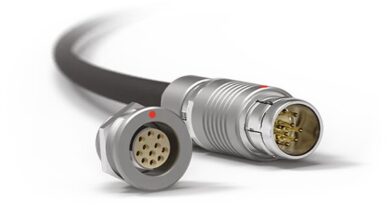Vibrating Spiral Conveyor: A Comprehensive Guide to Design, Benefits, and Applications
Introduction
The vibrating spiral conveyor is a specialized material handling system designed to transport products or materials vertically using vibration and a spiral motion. This type of conveyor is particularly useful in industries that require efficient vertical lifting or lowering of items over a compact footprint. This article provides an in-depth look at the design, advantages, and applications of Vibrating Spiral Conveyor highlighting their effectiveness in various industrial settings.
What is a Vibrating Spiral Conveyor?
A vibrating spiral conveyor combines the principles of vibration and spiral motion to move materials vertically. It consists of a helical or spiral-shaped conveyor belt or trough that is subjected to vibrations. These vibrations cause the material to move along the spiral path, either upward or downward, depending on the direction of the conveyor.
Key Components of a Vibrating Spiral Conveyor
- Spiral Conveyor Belt or Trough:
- Function: The main component that carries materials in a spiral motion.
- Detail: Made from materials such as stainless steel, plastic, or modular belts, designed to accommodate various types of products.
- Vibration Motor:
- Function: Provides the vibrations necessary for material movement.
- Detail: Includes an electric motor with unbalanced weights or eccentric shafts to generate the required vibratory motion.
- Vertical Column:
- Function: Supports the helical conveyor system and maintains its structural integrity.
- Detail: Constructed from robust materials like steel or aluminum to handle the stress of material transport.
- Feed and Discharge Mechanisms:
- Function: Facilitate the entry and exit of materials into and out of the conveyor system.
- Detail: Can be customized to match specific loading and unloading requirements.
- Support Structure:
- Function: Provides stability and support for the entire conveyor system.
- Detail: Includes mounting brackets, legs, and frames designed for durability and stability.
How a Vibrating Spiral Conveyor Works
The vibrating spiral conveyor operates by using a combination of spiral motion and vibrations to move materials. Materials are introduced at the base of the conveyor, where the spiral belt or trough, subjected to vibrations, moves the materials in a helical path. As the conveyor spirals upwards or downwards, the material is transported to the desired elevation, efficiently handling the vertical transport in a compact footprint.
Benefits of Vibrating Spiral Conveyors
- Space Efficiency:
- Benefit: Utilizes minimal floor space by moving materials vertically in a compact spiral.
- Detail: Ideal for facilities with limited space or where space optimization is critical.
- Continuous Operation:
- Benefit: Provides smooth, continuous material transport with minimal interruptions.
- Detail: Ensures consistent handling and processing of materials.
- High Capacity:
- Benefit: Capable of handling large volumes of materials in a continuous flow.
- Detail: Suitable for high-throughput applications and heavy-duty use.
- Versatility:
- Benefit: Can transport a wide range of materials, including bulk products, powders, and irregularly shaped items.
- Detail: Adaptable to various industries and material handling needs.
- Reduced Maintenance:
- Benefit: Designed for durability with fewer moving parts, reducing maintenance requirements.
- Detail: Vibratory motion is gentle on materials, minimizing wear and tear on the conveyor system.
- Customizable Design:
- Benefit: Can be tailored to specific operational needs, including different spiral configurations and vibration settings.
- Detail: Allows for adjustments to accommodate various material types and handling requirements.
Applications of Vibrating Spiral Conveyors
- Food and Beverage Industry:
- Application: Transporting packaged goods, such as bottles, cans, and boxes, between different levels.
- Benefit: Enhances efficiency in packaging and distribution processes.
- Pharmaceutical Industry:
- Application: Moving pharmaceutical products and materials through different stages of processing.
- Benefit: Ensures reliable and contamination-free handling.
- Manufacturing:
- Application: Elevating components or finished products in production lines.
- Benefit: Facilitates smooth transitions between production stages.
- Logistics and Warehousing:
- Application: Handling goods in warehouses or distribution centers, moving items between floors.
- Benefit: Optimizes space usage and improves workflow efficiency.
- Recycling:
- Application: Sorting and transporting recyclable materials in recycling facilities.
- Benefit: Enhances material handling and sorting processes.
- Automotive Industry:
- Application: Moving automotive parts and components in assembly lines or storage areas.
- Benefit: Streamlines the handling of parts and components.
Key Considerations When Choosing a Vibrating Spiral Conveyor
- Material Characteristics:
- Consideration: Assess the type of materials to be transported, including their size, weight, and flow properties.
- Impact: Ensures the conveyor is designed to handle specific material requirements.
- Height and Capacity Requirements:
- Consideration: Determine the required elevation and throughput capacity for the conveyor.
- Impact: Ensures the conveyor meets operational demands and performance expectations.
- Space Constraints:
- Consideration: Evaluate the available space for installation and operation.
- Impact: Ensures the conveyor fits within the spatial constraints of your facility.
- Environmental Conditions:
- Consideration: Consider factors such as temperature, humidity, and exposure to chemicals.
- Impact: Ensures the conveyor is suitable for the operating environment.
- Customization Needs:
- Consideration: Identify any specific requirements for customization, such as special belt materials or configurations.
- Impact: Ensures the conveyor meets unique operational needs.
- Maintenance and Support:
- Consideration: Review the manufacturer’s support and maintenance services.
- Impact: Ensures you have access to necessary support for ongoing maintenance and troubleshooting.
Conclusion
Vibrating spiral conveyors offer an efficient and space-saving solution for vertical material transport across various industries. Their design allows for continuous, high-capacity operation in a compact footprint, making them ideal for applications that require effective vertical handling. By considering factors such as material characteristics, height requirements, and environmental conditions, you can select a vibrating spiral conveyor that enhances your material handling processes and delivers long-term value.




